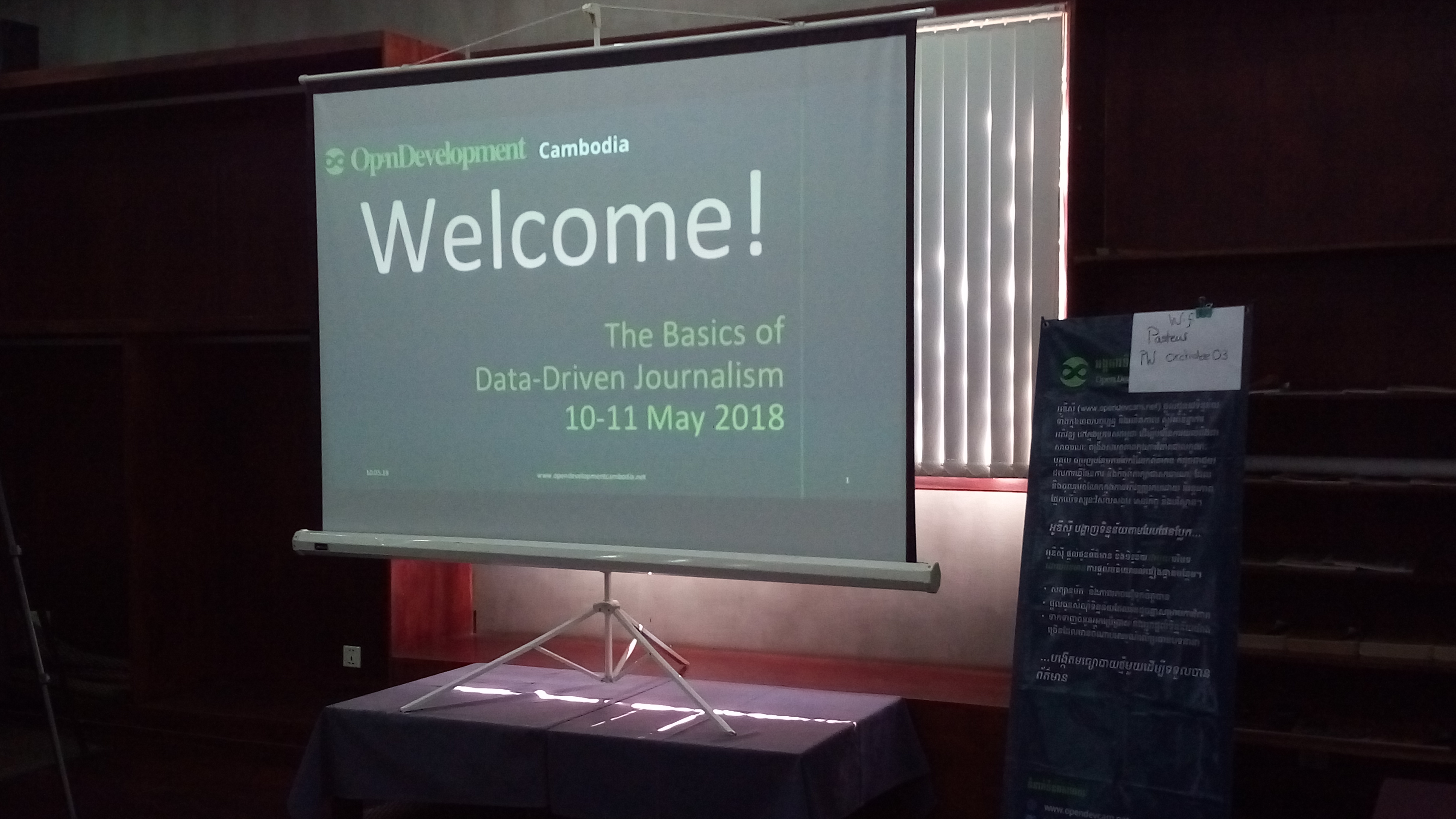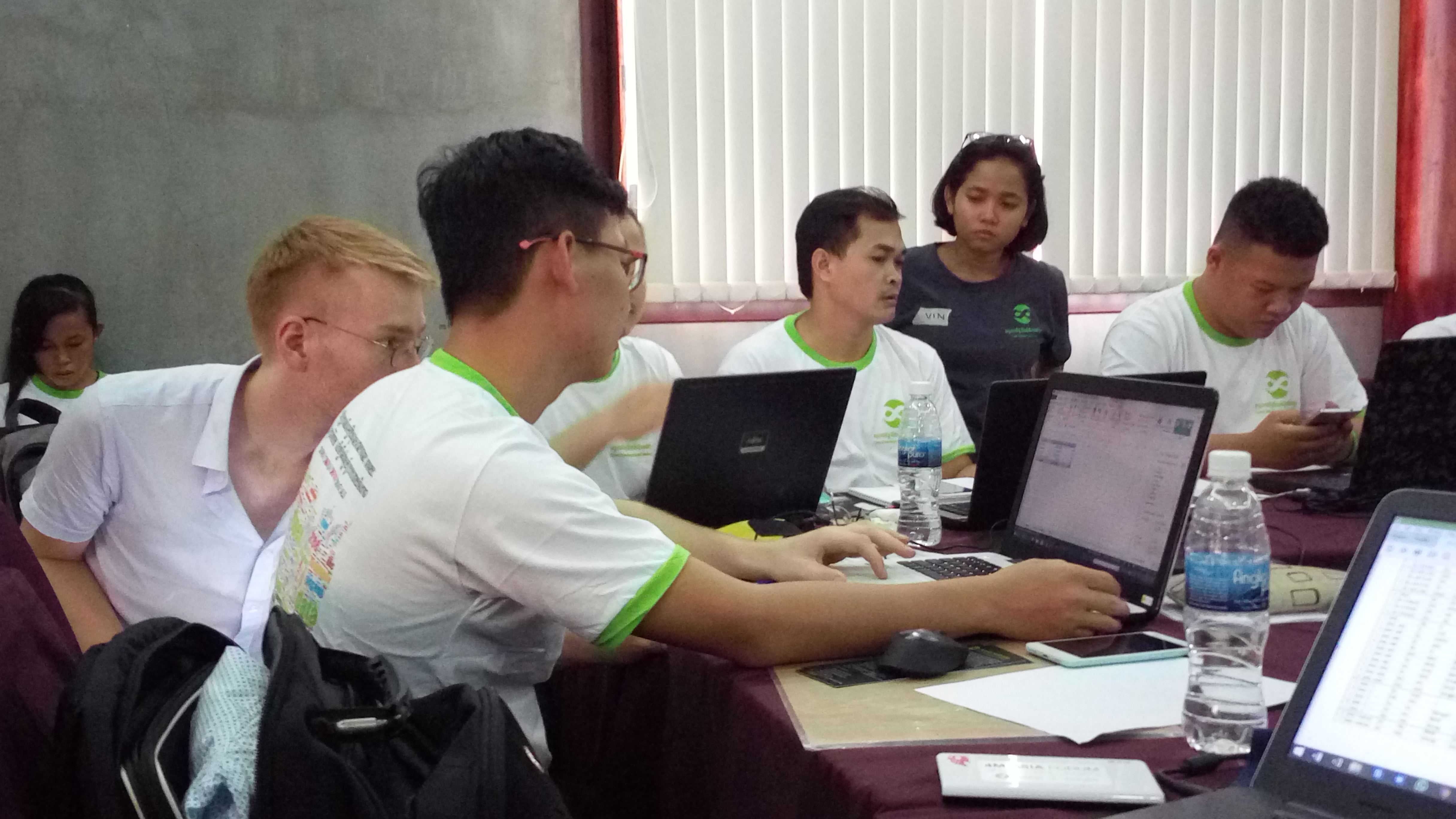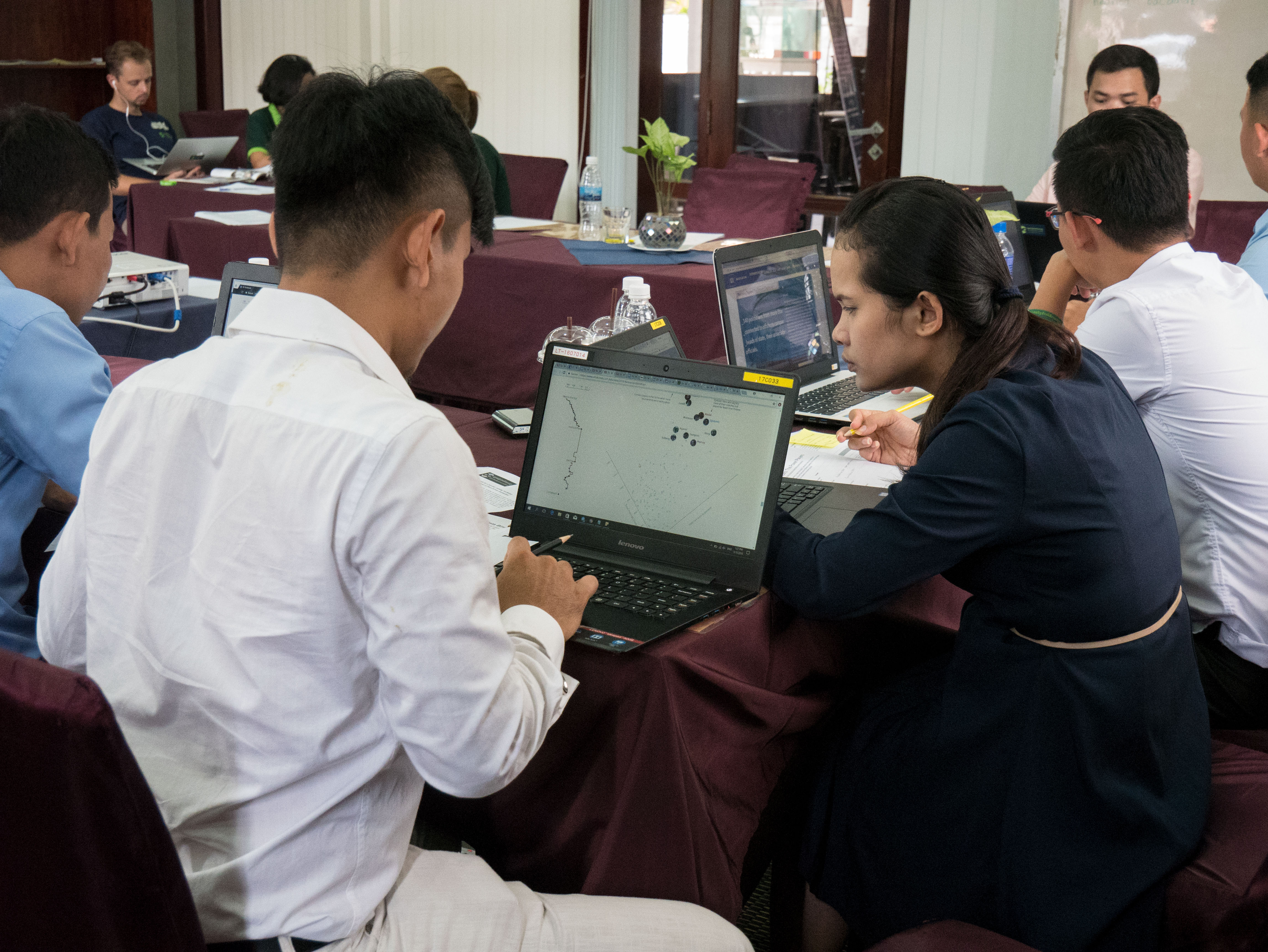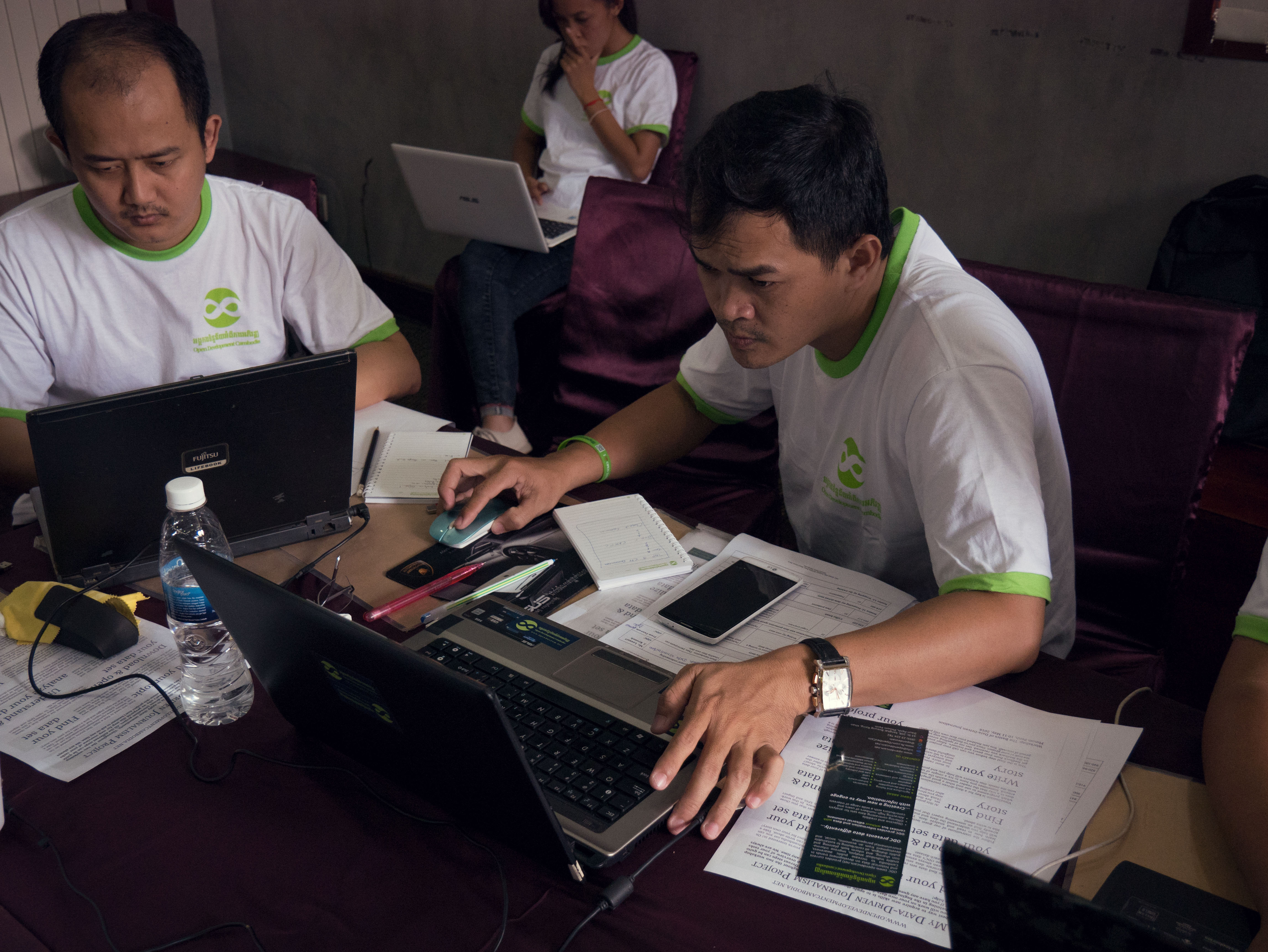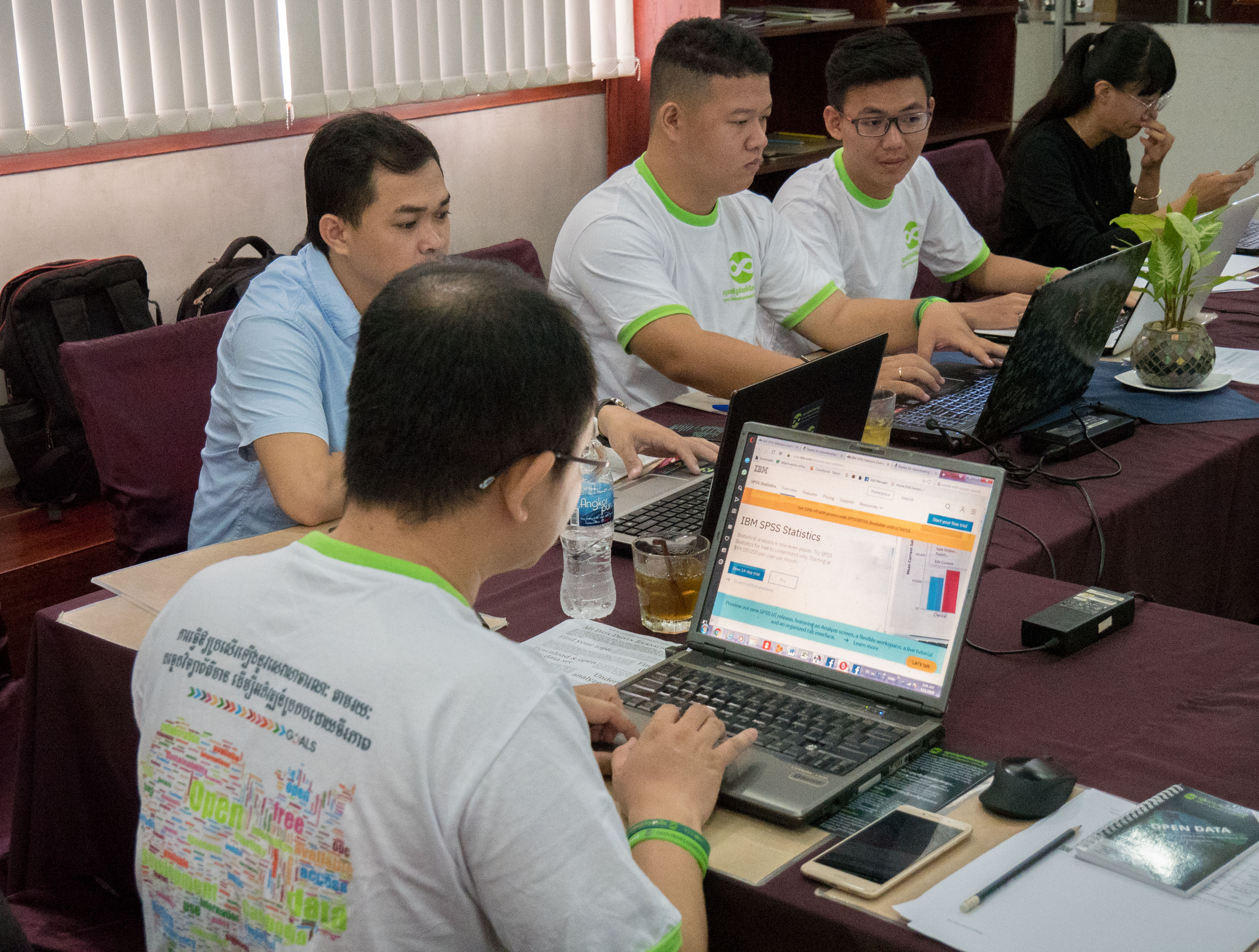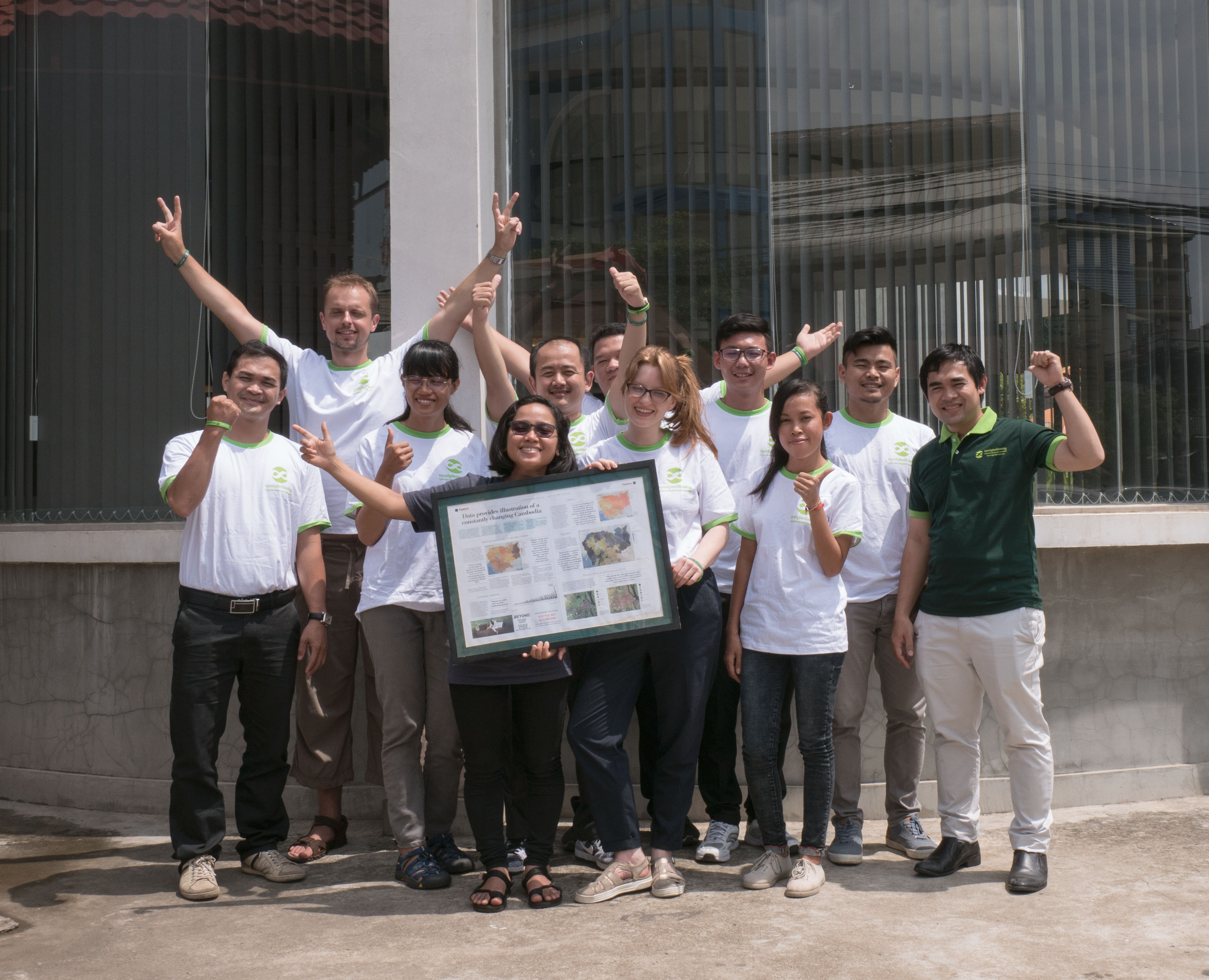ពីទិន្នន័យទៅជាខ្លឹមសារព័ត៌មាន៖ អង្គការអូឌីស៊ីរៀបចំសិក្ខាសាលាស្តីអំពីការទាញយកទិន្នន័យសម្រាប់អាជីពជាអ្នកសារព័ត៌មាន
ទិន្នន័យនៅគ្រប់ទីកន្លែង! ចាប់តាំងពីការកើនឡើងនៃអ៊ិនធឺណែតចំនួនព៌ត័មានជាទិន្នន័យបានរីកដុះដាលគួរឱ្យកត់សំគាល់។ អ្វីគ្រប់យ៉ាងដែលយើងឃើញនៅលើបណ្តាញអ៊នឡាញគឺជាប្រភេទ ទិន្នន័យឌីជីថល។ មូលហេតុនេះហើយ វាមិនមែនជារឿងគួរឱ្យភ្ញាក់ផ្អើលទេ ដែលមិនត្រឹមតែអ្នកវិទ្យាសាស្ត្រ បុគ្គលិកធនាគារ និងអ្នកស្រាវជ្រាវទេដែលបានប្រើធនធានទាំងនេះ ប៉ុន្តែអ្នកសារព័ត៌មានក៏ប្រើប្រាស់ទិន្នន័យទាំងនេះដើម្បីស្វែងរក និងបកស្រាយរឿងរ៉ាវរបស់ពួកគេដែរ។ ទោះជាយ៉ាងណា ការប្រើប្រាស់ទិន្នន័យ មិនងាយស្រួលសម្រាប់អ្នកសារព័ត៌មានទេ ជាពិសេសនៅពេលដែលពួកគេ មិនទាន់មានលទ្ធភាពវិភាគទិន្នន័យនៅឡើយ។ ហេតុនេះហើយបានជា អង្គការទិន្នន័យអំពីការអភិវឌ្ឍ (អូឌីស៊ី) សហការជាមួយ មជ្ឈមណ្ឌលកម្ពុជាដើម្បីប្រព័ន្ធផ្សព្វផ្សាយឯករាជ្យ (CCIM) បានរៀបចំសិក្ខាសាលារយៈពេល ០២ ថ្ងៃ សម្រាប់អ្នកសារព័ត៌មានអាជីព និងនិស្សិតសារព័ត៌មាន ដើម្បីបណ្តុះបណ្តាលពួកគេពីរបៀបទាញយកទិន្នន័យសម្រាប់សរសេរព័ត៌មាន។ ដើម្បីផ្តល់ឱ្យអ្នកចូលរួមនូវការបណ្តុះបណ្តាលល្អបំផុត អ្នកជំនាញមួយចំនួនត្រូវបានអញ្ជើញឱ្យចែករំលែកចំណេះដឹងរបស់ពួកគេជាមួយអ្នកចូលរួម។
ដំបូងអ្នកចូលរួមត្រូវបានណែនាំពីអត្ថន័យនៃ ការទាញយកទិន្នន័យសម្រាប់អាជីពជាអ្នកសារព័ត៌មាន។ «សំដៅលើ ការអនុវត្តនៃការស្វែងរករឿងរ៉ាវជាលេខ និងការប្រើលេខដើម្បីប្រាប់រឿងរ៉ាវ» យោងតាមលោក Meredith Broussard។ វាមិនងាយស្រួលយល់នោះទេ ដូចនេះជំហានដំបូងអ្នកចូលរួម មានឱកាសអានឧទាហរណ៍ជាក់ស្តែងមួយចំនួន ដែលជាឧទាហរណ៍ ពីទិន្នន័យសម្រាប់សារព័ត៌មាន។ សម្រាប់អ្នកអាន ដែលចាប់អារម្មណ៍លើប្លក់នេះ ឧទាហរណ៍មួយចំនួន ត្រូវបានដាក់ក្នុបតំណភ្ជាប់នៅចុងបញ្ចប់នៃអត្ថបទនេះ។ ខ្លឹមសារព័ត៌មានដែលបកស្រាយពីទិន្នន័យនេះ តម្រូវឱ្យអ្នកចូលរួមធ្វើការលើគម្រោងផ្ទាល់ខ្លួនរបស់ពួកគេ ក្នុងរយៈពេលពីរថ្ងៃ។ រាល់ជំហាននៃការសរសេរយោងតាមទ្រឹស្តី ដែលអាចឱ្យអ្នកចូលរួមសរសេរខ្លឹមសារព័ត៌មានរបស់ពួកគេផ្ទាល់។
ជំហានដំបូងបំផុត ក្នុងការសរសេររឿងរ៉ាវចេញពីទិន្នន័យនេះ គឺអ្នកចូលរួមត្រូវស្វែងរកទិន្នន័យដែលចង់បានដើម្បីសរសេរជាសាច់រឿង។ លោក លេណាត ក្រុតហ្ស៊ែឃ ដែលជាបុគ្គលិកហាត់ការ ផ្នែកប្រព័ន្ធផ្សព្វផ្សាយ និងទំនាក់ទំនង នៅអូឌីស៊ី បានបង្ហាញពីរបៀប និងកន្លែងដែលត្រូវស្វែងរកទិន្នន័យ ខណៈពេល កញ្ញា ឌុច សុធាវីន មន្ត្រីស្រាវជ្រាវនិងភាពជាដៃគូ បានណែនាំអ្នកចូលរួមប្រើប្រាស់ទិន្នន័យអូឌីស៊ី ដែលជាធនធានទិន្នន័យដ៏ល្អបំផុតមួយសម្រាប់កម្ពុជា។ បន្ទាប់មកអ្នកសារព័ត៌មាន និងសិស្សទាំងនេះ បានស្វែងយល់អំពីការវិភាគទិន្នន័យដោយប្រើកម្មវិធី SPSS ។ ប៉ុន្តែជាការពិតណាស់ គ្រាន់តែការវិភាគទិន្នន័យគឺមិនគ្រប់គ្រាន់សម្រាប់អ្នកសារព័ត៌មានទេ អ្វីដែលសំខាន់បំផុតគឺការបកស្រាយទិន្នន័យតាមបែបផែនផ្សេងៗ៖ ការតាងទិន្នន័យដែលងាយស្រួលយល់។ បន្ទាប់ពីការណែនាំទូទៅអំពី ការតាងទិន្នន័យ និងឧបករណ៍សំខាន់ៗមួយចំនួន អ្នកចូលរួមមានឱកាសធ្វើការតាងទិន្នន័យរបស់ពួកគេ។ នៅទីបញ្ចប់ អ្នកចូលរួមមួយចំនួនមានមោទនភាពក្នុងការបង្ហាញព័ត៌មានរបស់ពួកគេ ដែលមានប្រធានបទជាច្រើនទាក់ទងនឹង ការអប់រំ និងការផ្គត់ផ្គង់ទឹក និងកំណើនសេដ្ឋកិច្ចរបស់ប្រទេសកម្ពុជា។
អ្នកចូលរួមទាំងអស់ទទួលបានវិញ្ញាបនប័ត្រមួយ បន្ទាប់ពីចូលរួមសិក្ខាសាលា ដែលជាការបង្ហាញឱ្យឃើញថាពួកគាត់ទទូលបានចំណេះដឹង និងជំនាញថ្មីៗអំពីការទាញយកទិន្នន័យសម្រាប់អាជីពជាអ្នកសារព័ត៌មាន។ សិក្ខាកាមមួយចំនួនដឹងច្បាស់ថា ពួកគេនឹងអាចប្រើប្រាស់ជំនាញទាំងនេះសម្រាប់ការងារ នាពេលអនាគតរបស់ពួកគេ និងអះអាងថា ០២ ថ្ងៃនេះបានជម្រុញទឹកចិត្តក្នុងអាជីពជាអ្នកសារព័ត៌មានដោយប្រើប្រាស់ទិន្នន័យ។ សិក្ខាសាលានេះ គឺជាធាតុសំខាន់ សម្រាប់អ្នកព័ត៌មាន ខណៈដែលទិន្នន័យកំពុងដើរតួសំខាន់នៅក្នុងគ្រប់ទិដ្ឋភាពនៃជីវិត។ អ្នកចូលរួមម្នាក់បានសង្ខេបថា «ខ្ញុំគិតថាសិក្ខាសាលានេះមានអត្ថប្រយោជន៍ខ្លាំងដល់សង្គមរបស់យើង ពីព្រោះវាអាចជួយអ្នកអានកាន់តែច្រើន យល់កាន់តែច្បាស់អំពីស្ថានភាពនៅក្នុងប្រទេសដោយការអានអត្ថបទព័ត៌មានបកស្រាយចេញពីទិន្នន័យ។»
ដំណឹងល្អសម្រាប់អ្នកដែលខកខានក្នុងសិក្ខាសាលាលើកទី ១៖ នៅថ្ងៃទី ២៤ និង ២៥ ខែឧសភា នឹងមានសិក្ខាសាលាមួយទៀតស្តីអំពីសារព័ត៌មាន ដែលរៀបចំឡើងដោយ អង្គការទិន្នន័យអំពីការអភិវឌ្ឍ (Open Development Cambodia) និងមជ្ឈមណ្ឌលកម្ពុជាសម្រាប់ប្រព័ន្ធផ្សព្វផ្សាយឯករាជ្យ (CCIM)។ សិក្ខាសាលានេះធ្វើឡើងដោយឥតគិតថ្លៃ និងធ្វើនៅរាជធានីភ្នំពេញ។ ប្រសិនបើអ្នកចាប់អារម្មណ៍ សូមចុះឈ្មោះនៅទីនេះ ៖ https://bit.ly/2vLphqK
តំណភ្ជាប់ឧទាហរណ៍នៃអត្ថបទពីការទាញយកទិន្នន័យសម្រាប់អាជីពជាអ្នកសារព័ត៌មាន៖
Roger Federer – A career in data
The Panama papers and power players
Why are eggs differently shaped?
